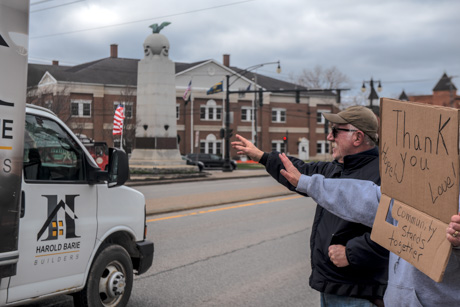USDA: Very low-income NY households to get $397 million in additional food benefits over next six months
Press release:
The U.S. Department of Agriculture (USDA) on Thursday took action to provide $1 billion per month in additional food assistance to an estimated 25 million people in very low-income households that are participating in the Supplemental Nutrition Assistance Program (SNAP) and struggling to put food on the table due to the coronavirus pandemic.
The estimated increase in food assistance for New York State for one month is $66.2 million and for six months it is $397.1 million.
Starting this month, households that had not received at least $95 per month in increased benefits through emergency allotments during the pandemic – because they were already at or close to receiving the current maximum benefit – will now be eligible to receive additional benefits. Benefit levels will remain unchanged for households that have been receiving increased payments of at least $95 per month.
States may need a few weeks to update their systems and get the additional benefits to participants.
“The emergency SNAP increases authorized by Congress last year were not being distributed equitably, and the poorest households – who have the least ability to absorb the economic shocks brought about by COVID – received little to no emergency benefit increases,” said Agriculture Secretary Tom Vilsack.
“As part of President Biden’s commitment to deliver economic relief, and ensure every family can afford to put food on the table, today’s actions will provide much-needed support for those who need it most.”
- State-level benefit estimates (PDF, 138 KB)
The Families First Coronavirus Response Act authorized emergency allotments to SNAP households to help address temporary food needs during the pandemic. Since the start of the pandemic, USDA has issued about $29 billion in additional benefits, to bring all SNAP households up to the maximum benefit for their household size. Unfortunately, households already at the maximum SNAP benefit received no additional support. Among households that received little to no benefit increase, about 40 percent have children, 20 percent include someone who is elderly and 15 percent include someone who is disabled.
On Jan. 22, President Biden, issued his Executive Order on Economic Relief Related to the COVID-19 pandemic, directing all federal agencies to consider administrative actions to better address the current economic crisis resulting from the pandemic. At that time, the White House called on USDA to consider allowing larger Emergency Allotments for the lowest income SNAP households.
USDA touches the lives of all Americans each day in so many positive ways. In the Biden-Harris Administration under Secretary Vilsack, USDA is committed to transforming America’s food system with a greater focus on: more resilient local and regional food production; fairer markets for all producers; ensuring access to healthy and nutritious food in all communities; building new markets and streams of income for farmers and producers using climate smart food and forestry practices; making historic investments in infrastructure and clean energy capabilities in rural America; committing to equity across the Department by removing systemic barriers and building a workforce more representative of America.
To learn more, visit www.usda.gov.

